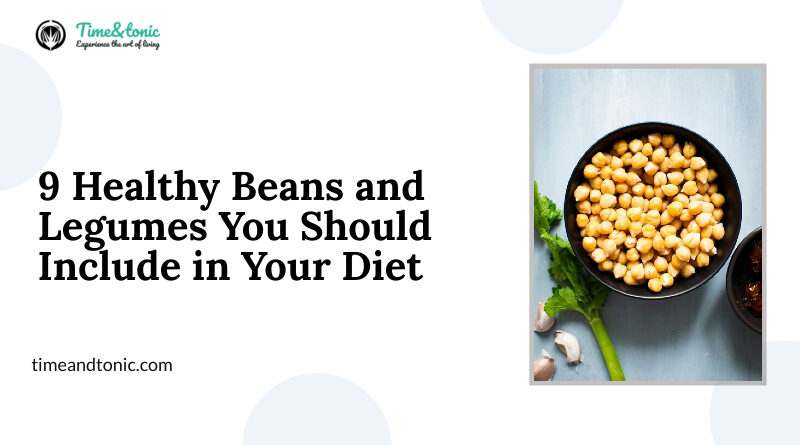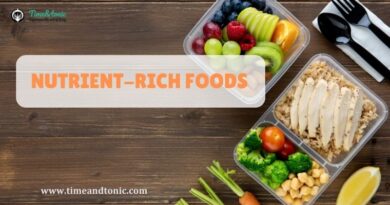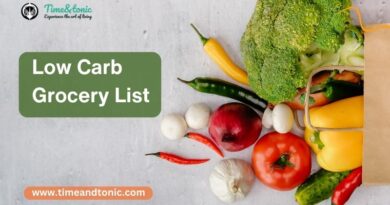9 Healthy Beans and Legumes You Should Include in Your Diet
Healthy Beans and Legumes – Beans and legumes are not only delicious but also incredibly nutritious. They are packed with protein, fiber, vitamins, and minerals that contribute to a healthy diet. These humble legumes, often overlooked, have been sustaining human diets for thousands of years across various cultures.
In this article, we will delve deeper into the world of beans and legumes, exploring their nutritional benefits and introducing you to nine healthy options that you should consider incorporating into your meals for a well-rounded and nutritious diet.
9 Healthy Beans and Legumes
The nutritional value of beans and legumes extends far beyond their humble appearance. They are true powerhouses of essential nutrients, making them an essential component of a balanced diet. Let’s take a closer look at what makes them so remarkable:
1. Chickpeas (Garbanzo Beans)

Chickpeas, also known as garbanzo beans, are highly versatile and can be used in a variety of dishes. They are an excellent source of protein and fiber, making them a great addition to salads, hummus, and curries. Chickpeas also provide essential vitamins and minerals, including folate and iron.
But there’s more to chickpeas than just their nutritional value. They have a long history dating back thousands of years, with origins in the Middle East. Chickpeas have been a staple in various cuisines worldwide, from Indian chana masala to Mediterranean falafel. Their versatility and taste have made them a beloved ingredient in both traditional and modern recipes.
Also Read: 7 Incredible Ways To Spend A Day for Mental Health
2. Black Beans
Black beans are a nutritional powerhouse, offering a rich source of protein, fiber, and iron. They are commonly used in soups, salads, and burritos. Including black beans in your diet can help support your overall health and provide a hearty, satisfying meal.
Black beans also have a unique flavor and a slightly sweet undertone. They are an integral part of Latin American cuisine, featuring prominently in dishes like Cuban black bean soup and Brazilian feijoada. The deep, dark color of these beans hints at their high antioxidant content, which can help combat oxidative stress in the body.
3. Lentils
Lentils are a fantastic source of plant-based protein, fiber, and various vitamins and minerals. They are perfect for adding substance to soups, stews, and salads. Lentils also cook relatively quickly, making them a convenient option for busy individuals seeking a nutritious meal.
Lentils have a rich history and have been cultivated for thousands of years. They are believed to have originated in the Near East and have played a crucial role in the diets of various civilizations. Today, lentils come in different colors, including green, brown, and red, each with its unique flavor and texture. Keep reading for more information on Healthy Beans and Legumes.
4. Kidney Beans
Kidney beans are well-known for their high protein and fiber content. They are commonly used in chili, salads, and various bean-based dishes. These beans provide sustained energy and can help regulate blood sugar levels due to their low glycemic index.
Kidney beans got their name due to their shape, which resembles a human kidney. They have a slightly sweet and nutty flavor that pairs well with a wide range of ingredients. Kidney beans are also rich in antioxidants, which can have positive effects on heart health and reduce the risk of chronic diseases.
5. Pinto Beans

Pinto beans are a favorite in Mexican and Southwestern cuisine. They are rich in both protein and fiber, making them a nutritious choice for various dishes. Whether used in burritos, tacos, or as a side, pinto beans add a hearty and satisfying element to your meals.
The name “pinto” translates to “painted” in Spanish, referring to the beans’ mottled appearance. They have a creamy texture and a mild, earthy flavor that pairs well with spices and herbs commonly used in Mexican cooking. Pinto beans are not only delicious but also provide essential nutrients like folate, magnesium, and potassium.
Also Read: The Surprising Ways Sinus Issues Affect Your Sleep and Health
6. Green Peas
Green peas offer a good dose of protein, fiber, and essential vitamins. They are incredibly versatile and can be used in soups, stir-fries, and side dishes. Green peas not only enhance the flavor of your meals but also provide valuable nutrients.
Peas are a member of the legume family, and their sweet, fresh flavor makes them a favorite among both children and adults. While they are often thought of as a side dish, green peas can also shine as the star of a meal when used in dishes like pea risotto or pea and mint soup. They are rich in vitamin C, vitamin K, and various B-vitamins.
7. Navy Beans
Navy beans, known for their delicate flavor, are a nutritious addition to soups and casseroles. They are high in protein, fiber, and folate, a B-vitamin important for overall health. Incorporating navy beans into your diet can support your nutrient intake.
Navy beans earned their name because of their historical association with the United States Navy. They were a staple food for sailors due to their long shelf life and nutritional value. Today, navy beans are valued not only for their taste but also for their role in promoting heart health and digestive regularity.
8. Adzuki Beans
Adzuki beans are often used in Asian desserts and sweet treats due to their slightly sweet flavor. Despite their sweetness, they are high in protein and fiber, making them a nutritious choice for both savory and sweet dishes.
These beans have been a dietary staple in East Asian countries for centuries. In Japan, they are used to make red bean paste, a common filling in traditional sweets. Adzuki beans are also a source of antioxidants, which can help protect cells from damage caused by free radicals.
9. Black-eyed Peas

Black-eyed peas are a Southern classic, used in soups, stews, and traditional Southern dishes. They are a good source of protein and fiber, contributing to a balanced diet. Including black-eyed peas in your meals can add flavor and nutrition.
Black-eyed peas are believed to have originated in West Africa and were brought to the Americas by enslaved Africans. They have since become a symbol of good luck when eaten on New Year’s Day in the American South. Beyond their cultural significance, black-eyed peas are a nutritious food choice, providing essential nutrients like potassium, magnesium, and folate.
Also Read: 10 Best Remedies for Digestive Health
In conclusion, Healthy Beans and Legumes are more than just a side dish or a salad topping; they are nutritional powerhouses that can elevate your meals and contribute to your overall health. Whether you’re a fan of chickpeas, black beans, lentils, or any of the other varieties mentioned, there’s a bean or legume for everyone.
By incorporating these nutritious options into your diet, you can enjoy a wide range of flavors and reap the many health benefits they offer. So go ahead, get creative in the kitchen, and explore the delicious world of beans and legumes for a healthier and more fulfilling lifestyle.
FAQs
Yes, beans and legumes are an excellent addition to a weight loss diet. They are high in fiber and protein, which can help you feel fuller for longer, reduce calorie intake, and support weight management.
Canned beans and legumes are a convenient option and still offer valuable nutrients. However, dried beans, when prepared at home, allow you to control salt and additives. If choosing canned, opt for low-sodium varieties or rinse them to reduce sodium content.




